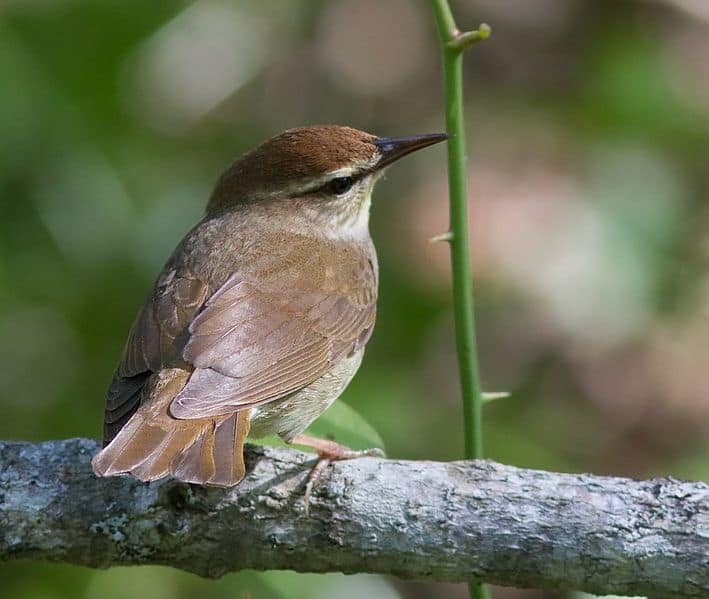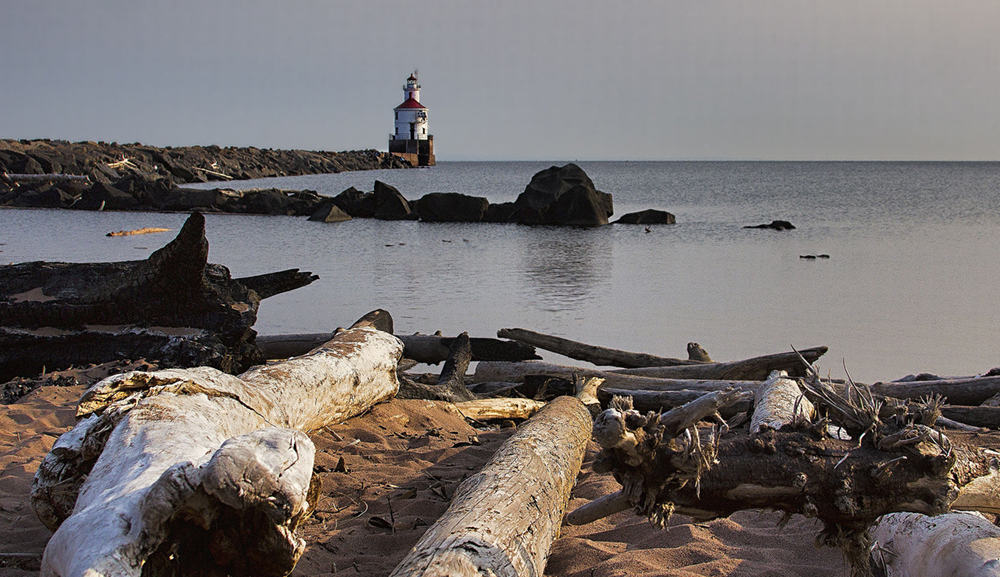When birders contemplate wilderness, they often imagine a tropical forest, a roadless green space where rare birds and magical creatures like jaguars may be found. Others think of being in the deep mountains, in thin air; inhospitable and rocky habitats where only an Andean condor or a mountain goat may feel at home. I have been there, deep in the West African forest, at least a day’s walk from any village or settlement. I have been way up in the Andes, in some places so high and so dry that nearly no life exists. Those places are truly wild. But when people ask me about what I consider wilderness, my answer is immediate—the ocean, a pelagic trip!
For me, there is no feeling quite like being on a boat, in the realm of seabirds, whales, and fish. Nowhere else do I feel like such a visitor—privileged to be able to spend some time with these creatures in a place I know I don’t belong. It is true wilderness, and when you experience what you can see off the coast of California and put it into perspective, it is one of this continent’s most incredible bird shows anywhere. It rivals the sandhill cranes on the Platte River, the shorebird spectacle of Delaware Bay, the “duck factory” of the Prairies and Great Plains, hawk migration at Hawk Mountain, you name it. Northern California offshore birding is fantastic, but not easily accessible, and it’s sometimes framed in a way that makes it intimidating. But don’t cheat yourself out of what can be a life-changing day of birding! Let me tell you why I like it, and how to make it most comfortable.
California’s oceans are rich because they are biologically highly productive. There are lots of nutrients in the water, and they are near the surface where sunlight is available. Lots of food and light means a lot of growth. Also, in this part of the world there are consistent winds from the northwest, particularly in spring. The winds move the surface water offshore, causing cold and nutrient-rich water to rise up to take its place. This process of “upwelling,” as well as the slow flow of the California Current that transports cold, nutrient-rich water from north to south, creates the food bonanza that brings in the whales and the birds.
California is also endowed with amazing undersea canyons and mountains. With immense undersea topography getting in the way of currents, you can have amazing levels of oceanic productivity from the crazed upwellings that ensue. This makes northern California one of a kind among the oceans and coasts of the Northern Hemisphere! This is also why you want to get yourself on a boat and see what’s out there.
Setting Sail
On a classic “Nor Cal” pelagic trip, you board the boat in the early morning, hear a brief talk about boat birding, safety, and the like, and then head out of port. Often you may see your first seabirds, maybe red-necked phalaropes or pigeon guillemots, before you even leave port. If you are in Monterey, there are those cute sea otters to look at too. Then you start heading out to deeper water. Common murres and three (sometimes four) species of loon are around. Sometimes the first iconic seabirds, perhaps sooty shearwaters, show up right near shore, but as you proceed out, there are more and more, often thousands or tens of thousands of birds. In fact, millions of sooty shearwaters move through northern California each summer and early fall, as many of the birds that breed in the southern Pacific come to California for the pelagic feast. A single nesting colony in Chile has approximate 4 million sooties, so you can imagine the kind of numbers that descend onto California’s food-rich waters. Added to this spectacle are thousands of pink-footed shearwaters, hundreds of Buller’s shearwaters, a flesh-footed shearwater if you are lucky, and black-vented shearwaters if it is a warm-water year. You can really have a shearwater fiesta out there.
Don’t forget about the rhinoceros and Cassin’s auklets, and maybe a Xantus’s murrelet if you are having a lucky day. Three species of jaegers, Arctic tern, and south polar skua often appear in the mix too. Then there are the extreme wanderers—the black-footed albatross is sometimes (but not always) seen by the hundreds, and its rarer white-bellied cousin, the Laysan albatross, may pay a visit. The sheer diversity and abundance of birds are fantastic.
Northern California is also a wonderful place to see humpback whales. If the upwelling has been good, you might find a blue whale, sometimes with pods of hundreds and sometimes thousands of dolphins of various species, including the fantastic northern right whale dolphin—a personal favorite of mine.
After the initial declaration of “Sign me up!” many first-time seafarers begin asking important questions: “What do I do? What do I bring? When do I go? Will I get seasick?” Let’s work through the logistics of getting you out seabirding.
Where to Go
First of all, where can you go for great California pelagic bird watching? There are two main sites near the latitude of San Francisco: Monterey Bay and Cordell Bank, which is accessed from the port in Bodega Bay. Monterey Bay is about two hours south of San Francisco, and Bodega Bay is a little less than two hours north of San Francisco. The two sites share the same ocean, but the bird watching at each can be quite different. Black-footed albatrosses are commonly seen on Bodega pelagic trips but disappear after summer from Monterey Bay. Deep-water rarities are more likely off Bodega Bay, but sea conditions can be rougher there. Monterey Bay is a fantastic place, and all the good stuff can show up there, so I suggest you begin your pelagic birding there. Later, after you get the hang of Monterey, try a Bodega Bay outing.
Recently a new destination has opened up: the Fort Bragg pelagic, in northernmost California. These trips have caught on because they have been good for finding rare birds, including multiple Hawaiian petrels (part of the dark-rumped petrel pair of species).
When to Go
The next step is deciding when to go. Think of the ocean as you would any other birding hotspot in the world. There is seasonality, and you can’t expect to see everything on the checklist on your first trip. If I had to pick the single best time of year to go, it would be between mid-August and early October. This is when both diversity and numbers of individual birds peak.
Of course, you can never predict when you will see big numbers; it’s somewhat the luck of the draw. When it’s best to go can be determined by what exactly you hope to see. If your quest is to see an albatross, be aware that they leave Monterey Bay by August. You can still see them if you to head there earlier in July, or if you take a fall trip to Cordell Bank instead. Shearwater numbers and diversity build up through the summer and early fall, and the later arrivals include Buller’s and the uncommon flesh-footed shearwater—so wait until September if you are particularly interested in those species. Migration can be awesome offshore, and if you hit the right day there can be lots of southbound Arctic terns, along with the three species of jaeger, including several long-taileds. The height of the jaeger and tern migration is late August, a time when you also see some of the highest numbers of the gorgeous Sabine’s gull. The two pelagic phalaropes—red-necked and red—flock southward, the former in August and September and the latter more commonly in October.
The alcids, such as common murre and rhinoceros and Cassin’s auklets, are always around, but their abundance varies depending on local concentrations of food. Tip: If it is a good day for Cassin’s auklets, it means there is an abundance of their food source—krill. So be on the lookout for a much bigger krill specialist—the blue whale! In October, if warm water is coming in from the south, the rare Xantus’s murrelet may be found, but for that you need luck. Another spectacle you may aim to see is the concentration of storm-petrels that sometimes occurs. For some reason, probably because they are small and vulnerable, storm-petrels like to flock up in the day, often in Monterey Bay but sometimes farther north toward Cordell Bank. Predicting where they will be each year is guesswork, but if you catch it, you can see a large portion of the world’s population of ashy storm-petrel. Mixed in will be black storm-petrels and sometime a rarer species like Wilson’s or fork-tailed storm-petrel. The time to look is late September into early October; these pelagic trips are sometimes labeled as “storm-petrel study trips.”
Avoiding Seasickness
You may be reading this and getting excited about coming out and doing a pelagic trip, but asking in the back of your mind, “What if I get seasick?” This is one of those questions everyone worries about. Seasickness is a very real issue for some, but it is also partly psychological. I have found that the more I worry about seasickness, the more likely I am to feel a little woozy out there. The better the birds, the less likely I feel anything other than joy. Having said that, go ahead and use whatever method you think might work, be it a medicinal patch, wrist band, seasickness pills, voodoo, or your favorite teddy bear. If you want to maximize your chance of having a good ride, ask your doctor about scopolamine patches. There are also over-the-counter motion-sickness pills, but make sure you get the non-drowsy variety. These drugs do work, but they may have side effects as well, so talk to a doctor if you’re concerned.
Ensuring Success
There are some steps you can take before ever arriving at the boat to set you up for success. Number one is to get enough sleep the night before. Sometimes the boats take off at 7 a.m., and you’ll probably have to eat and drive to the port before then, so pelagic mornings are early mornings. Therefore, go to sleep early and try to get a full rest. Leave the celebration until after the pelagic trip, and avoid alcoholic beverages the night before. For breakfast, go for something filling, but avoid greasy foods. I have also found that if you keep your stomach working on something while on the trip, you’ll feel better. Some people swear by ginger snaps, and I like dry crackers. Also keep in mind that you need a packed lunch for the boat, because trips seldom arrive back at port before 3 p.m. or so. Do not forget the sunscreen—even on an overcast California day, you can burn. Finally, if there is a breeze, the boat sometimes kicks up spray. Take layers, dress warmly, and have rainproof clothing. It’s a good idea to have tissues to dry your binoculars or eyeglasses. Even on a day without wind, the speed of the boat itself can cause you to lose loose articles overboard, so make sure you have a way to tie down or secure your hat—and of course your binoculars!
California pelagic adventures are among the coolest and wildest birding we have in North America. Birds come from as far away as the Arctic, Antarctic, and New Zealand to the California coast. Shouldn’t you go and see them, just out of sheer respect for their troubles? And while you’re visiting, keep in mind the superb land birding that can be done here. Plus, consider the great seafood possibilities, and maybe a visit to the Golden Gate or the fantastic Monterey Bay Aquarium. See you out there!




